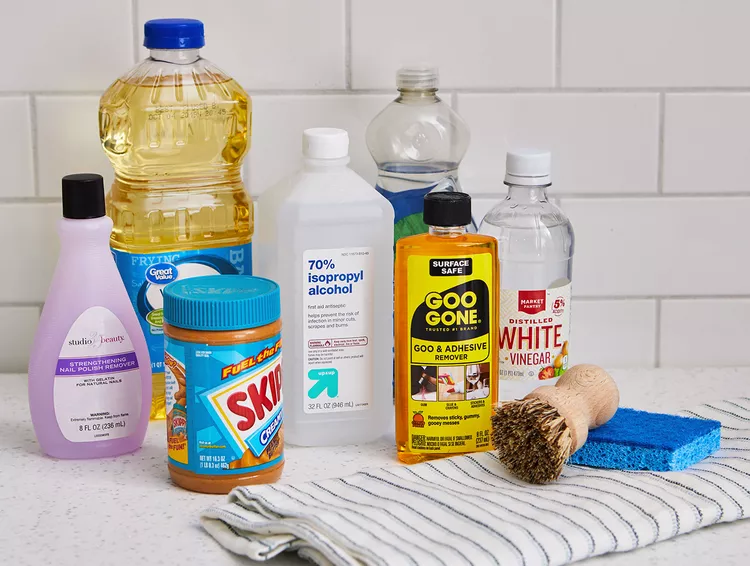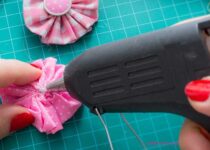How to remove glue from plastic
There is a wide variety of plastics, each with its characteristics. Some of these characteristics guarantee high hardness, density, and resistance to heat, water, and tensile stress. There is a wide range of uses for each variety of plastic. Textiles, auto parts, furniture, appliances, footwear, plumbing, electrical components, and many other everyday products are just some of the numerous everyday items made from plastic.
Wood glue, for example, is specially made to adhere to wood. Superglue is only one example of a type of glue that works well on various substrates like plastic. However, smooth, hard plastic will not attach well with superglue. The surface needs to be roughened up to get a good bond. The materials can also affect adhesion; for instance, glueing two plastic surfaces together will work but glueing plastic to a metal surface will not.
Remove Glue from Plastic
Now that you know not all adhesives will bond with plastic, especially smooth, high-density plastic materials, it’s time to learn more about removing glue from plastic. Labels on plastic surfaces are notoriously difficult to remove. Nothing is more aggravating than a sticky label that comes off in parts and leaves a sticky residue behind.
Remove Glue from Plastic Vinyl
One of the most common plastics used in auto manufacturing is vinyl. Vinyl is also an option for the home’s windows and floors. How do you get the glue off of vinyl or plastic? To remove adhesive from plastic vinyl, you will need the following:
- Water
- Cotton balls or paper towels
- Acetone
- A fresh washcloth
Remove as much adhesive as possible with a plastic scraper, but be cautious not to scratch the surface as you work. Always start with a little sample of plastic to ensure the desired results. When you’re sure no harm will be done, pour some acetone onto the cotton ball or paper towel. Apply a small amount of acetone to the affected area and wait for the glue to melt. Use a clean towel to dab away the adhesive. Repeat the operation if you aren’t satisfied that all the glue has been removed. Finally, wipe the area down with a cloth dampened with clean water, and then give it time to dry.

Glue Removal Using Common Household Items
Learn how to easily remove glue from plastic using solutions made from common household items by exploring the many resources available online. While it will require a little more patience, one of the simplest approaches is to use warm soapy water. Wrap the glue area in a clean towel dampened with warm water containing a little dishwashing liquid.
Veggie Oil and Baking Soda
Vegetable oil and baking soda are common kitchen staples, making this a straightforward procedure. Using a 1:1 ratio of baking soda to oil is sufficient, and it doesn’t matter what oil you use. Oils like coconut, vegetable, and sunflower oil are just a few examples. Blend them into a thick paste.
The size of the adhesive residue determines how much paste you will need to make. You would only need 15 ml of each ingredient for a label on a jar. Because of its higher fat content, coconut oil may be particularly effective at removing stubborn residual marks. Spread the paste all over the area that has glue on it. A towel will do the trick if you’d rather not use your fingers to spread the paste.
Give the glue enough time to soften by leaving the paste on for around 30 minutes. You can next use a scouring sponge to remove the remaining grime. If you keep cleaning, the adhesive will eventually come off. If the residue is particularly tenacious, apply the paste again and repeat the process. Finally, wash the plastic surface with soap and warm water to remove the remaining adhesive and oil.
Use Vinegar to dissolve glue on plastic.
Use a towel drenched in vinegar to cover the adhesive. After 15-30 minutes, remove the towel and wipe away the solution and glue. The adhesive will soften and peel off easily, or you can scrape it off with a toothbrush. If you’ve already cleaned the area with vinegar, rinse it with water and soap to remove the unpleasant smell. vinegar is also used to remove dried wood glue easily from the unwanted surface.
Options for Domestic Glue Remover on Plastic
Vegetable oil or moisturiser can be a gentler alternative to mineral spirits when attempting to dissolve adhesive from plastic. Cover the glue entirely with the oil or moisturiser. Cover the glue briefly and wipe it off with a damp cloth. Makeup wipes are another option:
- Rub one over the affected area.
- Let it aside for a moment.
- Use a paper towel or a clean cloth to wipe it down.
People frequently try to remove the glue by scraping it off with their nails, which might work but increases the likelihood that the plastic surface will be damaged. You might also attempt to remove it by scraping it with an old credit card, spatula, razor, or snub knife. To try and freeze the glue, put the plastic object in the freezer or place ice cubes in a plastic bag and place it over the affected region.
The adhesive can be easily scraped off after being frozen because of its hardened state. A hairdryer can also generate heat; keep it safe from plastic to avoid melting it. The surface can also be softly steamed. Mayonnaise and peanut butter are two other common household ingredients that can be used to dissolve glue. Both of these items have oil in them that is effective. Mayonnaise or peanut butter applied thickly and left on the adhesive for half an hour will help dissolve it. To get rid of the debris, use a clean towel.
How to Remove Glue from Plastic by Using Alcohol and Acetone?
Like vinyl, plastic may be cleaned of excess adhesive with acetone or rubbing alcohol. These are rather abrasive compounds, so you run the risk of scratching the surface. Put some acetone on a cotton swab or piece of paper towel. The remaining adhesive can be softened by dabbing at it. Remove with a clean, damp cloth; do not rub.

Tips and Techniques to Remove Glue from Plastic
Do-it-yourself approaches to fixing issues, such as removing glue from plastic surfaces, might backfire and worsen things. For instance, soft plastic can be harmed if a powerful solvent adhesive remover is used. Here are some suggestions to keep the plastic from getting scratched up.
- Before using a powerful adhesive, such as acetone, perform a test to be sure you won’t cause any additional harm.
- Instead of wiping the melted glue away, blot it to remove it. Wiping won’t help, and acetone shouldn’t be left on the surface for long because it will dry and create a film.
- Never attempt to remove glue from plastic with an abrasive tool or scourer; doing so will scratch the plastic and reduce its useful life. If you are not concerned about the plastic’s surface, try removing the glue with sandpaper.
Conclusion
Even if the adhesive is more of a nuisance than a boon at times, you shouldn’t let that deter you from gluing together treasured items. It’s not easy to eliminate, but plenty of tools exist to help.
FAQs
Can Superglue Be Cleaned Off Of Plastic?
Superglue can be removed from plastic in various ways, from using oil or scraping it off to utilizing a commercial adhesive remover. Due to the wide variety of adhesives and plastics available, only some techniques will yield desirable results. If using soapy warm water does not work, you can move on to the next easiest approach.
In what ways can you remove PVC glue?
Unlike regular glue, polyvinyl chloride (PVC) is only used to join other PVC materials. The ‘glue’ or solvent cement causes a chemical reaction that permanently melts PVC components and fuses them, making removal difficult. PVC glue can only be removed by cutting and replacing the affected area.
When glue dries on plastic, how do you get it off?
Taking adhesive off of plastic is a breeze. Rub the glue with a cloth soaked in vegetable oil or skin moisturiser. Let it sit for a while for the stuff to absorb, and then wipe it down. Soaking the area in white vinegar and scraping off the glue with a dull edge like a spatula works effectively.

Being associated with art and craft field since decades as a hobbyist and life long learner has given me an opportunity to learn many new things related to art, craft, paints and pottery which i am trying to share with your guys on this website. I have expertise of being professional painter and potter for the last 20+ years
I have learned mind blowing cool tips and insights which makes me a person with ability to improvise and come up with creative ideas and solutions to make stunning and impeccable art pieces of all types which are adored by people across the globe on this website and other platform.


